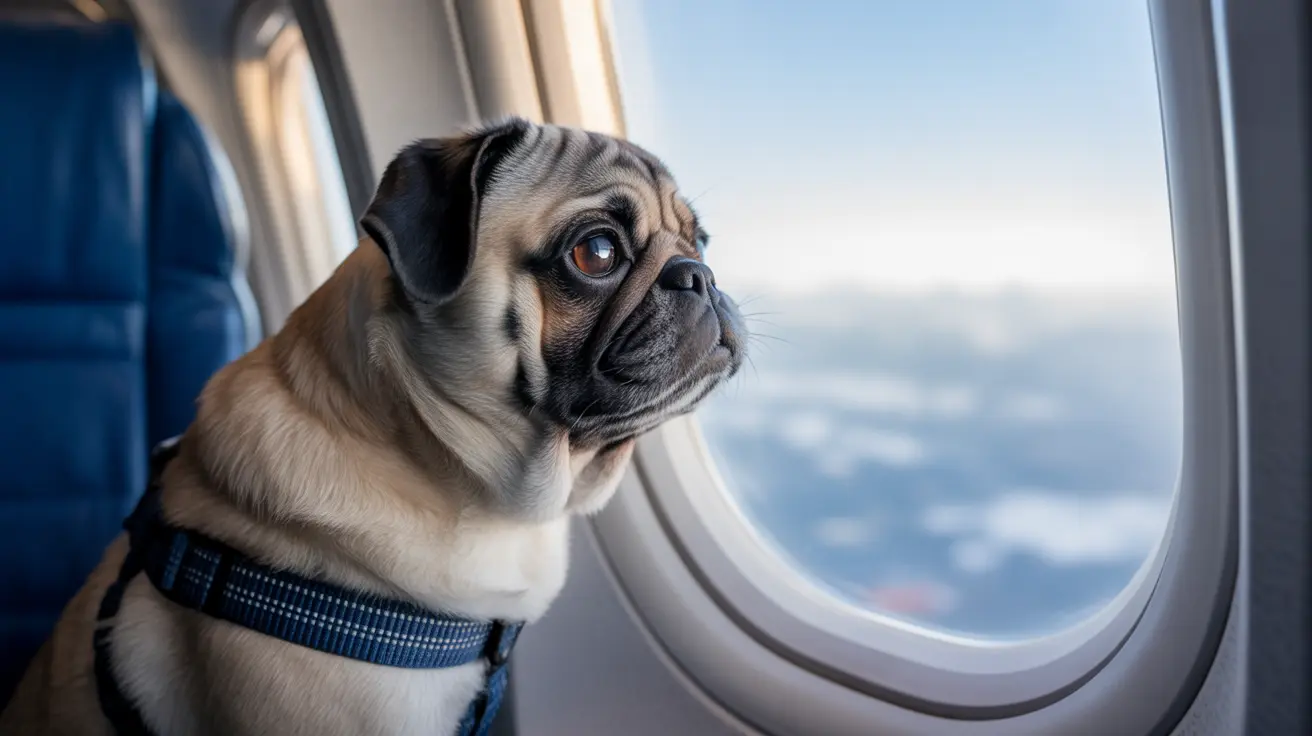If you're planning to fly with your furry friend, you might wonder if dogs' ears pop on planes like humans do. The short answer is yes - dogs can experience ear pressure changes during flights, and understanding how this affects them is crucial for ensuring a comfortable journey for your canine companion.
In this comprehensive guide, we'll explore how air pressure changes impact dogs during flights, recognize signs of discomfort, and learn practical ways to help your pet stay comfortable at altitude. Whether you're a first-time flyer with your dog or a seasoned traveler, this information will help you prepare for a smoother journey.
Understanding How Air Pressure Affects Dogs' Ears
Dogs have similar ear structures to humans, including the Eustachian tube that helps equalize pressure between the middle ear and the environment. However, dogs' Eustachian tubes are typically smaller and more horizontal than humans', which can make pressure equalization more challenging during rapid altitude changes.
During takeoff and landing, the quick changes in cabin pressure can cause discomfort or pain if your dog's ears don't equalize fast enough. This phenomenon, often called "airplane ear," occurs when the pressure inside the ear differs from the outside air pressure.
Recognizing Signs of Ear Discomfort in Flying Dogs
While dogs can't tell us directly when their ears are bothering them, they often display clear behavioral signs of discomfort. Watch for these common indicators:
- Pawing at their ears
- Whining or crying
- Excessive drooling
- Frequent yawning
- Shaking their head
- Showing signs of anxiety or restlessness
- Refusing treats or food
Preventing and Managing Your Dog's Ear Discomfort
Taking proactive steps before and during the flight can significantly reduce your dog's ear discomfort:
Before the Flight
- Schedule a veterinary check-up to ensure your dog's ears are healthy
- Clean your dog's ears properly if recommended by your vet
- Get your dog comfortable with their travel carrier
- Consider a practice run with car travel to reduce anxiety
During the Flight
- Offer chew toys or treats during takeoff and landing
- Keep your dog well-hydrated
- Maintain a calm demeanor to help your pet stay relaxed
- Monitor your dog for signs of distress
Special Considerations for Different Dog Breeds
Some dogs may be more susceptible to ear pressure issues during flights. Brachycephalic breeds (like Pugs, Bulldogs, and Boston Terriers) often have more sensitive respiratory systems and may experience more difficulty with pressure changes. Additionally, dogs with existing ear conditions or frequent ear infections may be at higher risk for discomfort.
Frequently Asked Questions
Do dogs' ears actually pop on planes like people's do, and can it cause them pain?
Yes, dogs' ears can experience pressure changes and "pop" during flights, similar to humans. While not all dogs show obvious signs of discomfort, the pressure changes can cause pain or discomfort, especially during takeoff and landing.
What are the signs my dog is uncomfortable from ear pressure during a flight, and how can I tell?
Common signs include pawing at the ears, whining, excessive drooling, frequent yawning, head shaking, and showing general signs of anxiety or distress. Some dogs may also become restless or refuse treats.
How can I help my dog equalize ear pressure and stay comfortable during takeoff and landing?
Offering chew toys or treats can encourage swallowing, which helps equalize ear pressure. Keeping your dog calm and well-hydrated also helps. Some veterinarians recommend special ear drops for air travel.
Are certain dog breeds or dogs with ear problems more at risk for ear pain when flying?
Yes, brachycephalic breeds and dogs with existing ear conditions are typically more susceptible to ear pressure problems during flights. Regular vet check-ups before flying are especially important for these dogs.
Should I sedate my dog for a flight to prevent ear discomfort, and what do vets recommend?
Most veterinarians do not recommend sedation for air travel, as it can affect a dog's natural ability to regulate their breathing and ear pressure. Always consult with your vet before considering any medication for air travel.
With proper preparation and attention to your dog's needs, you can help make air travel a more comfortable experience for your furry friend. Remember to always consult with your veterinarian before flying, especially if your dog has any pre-existing health conditions or ear problems.






